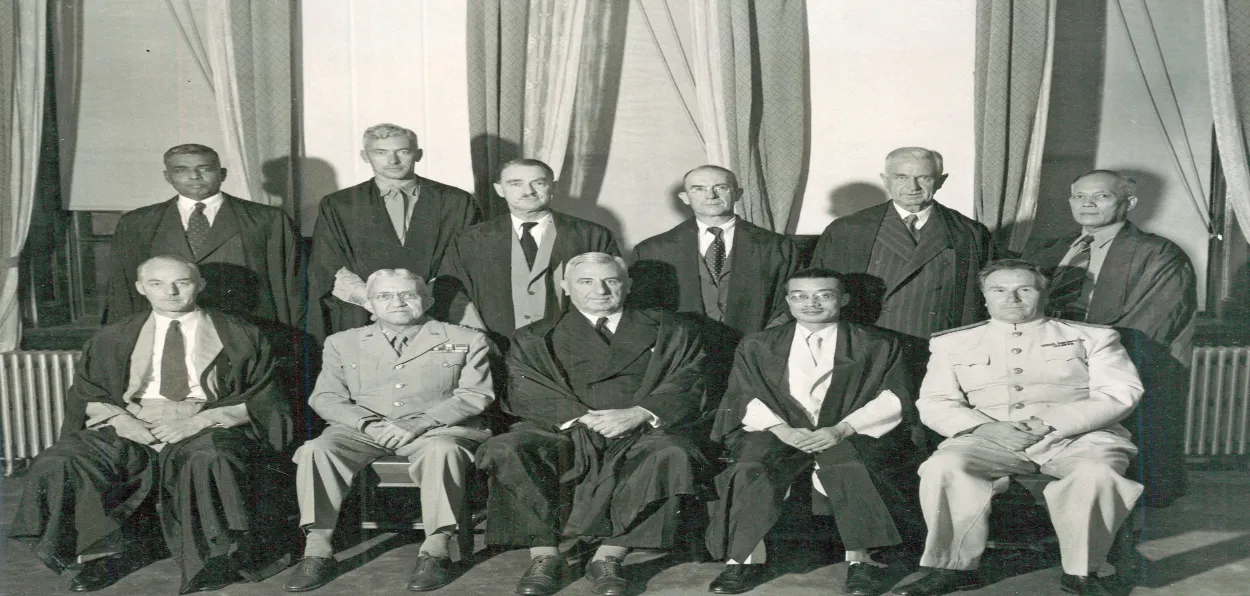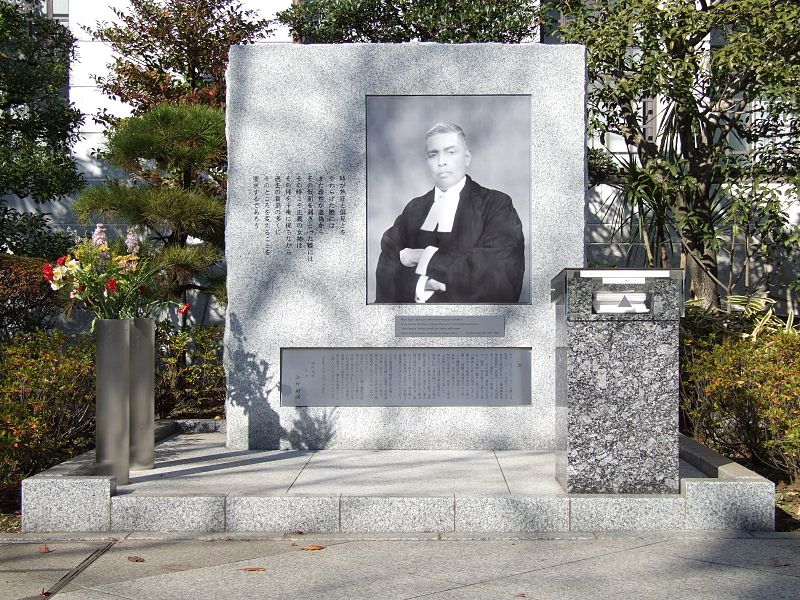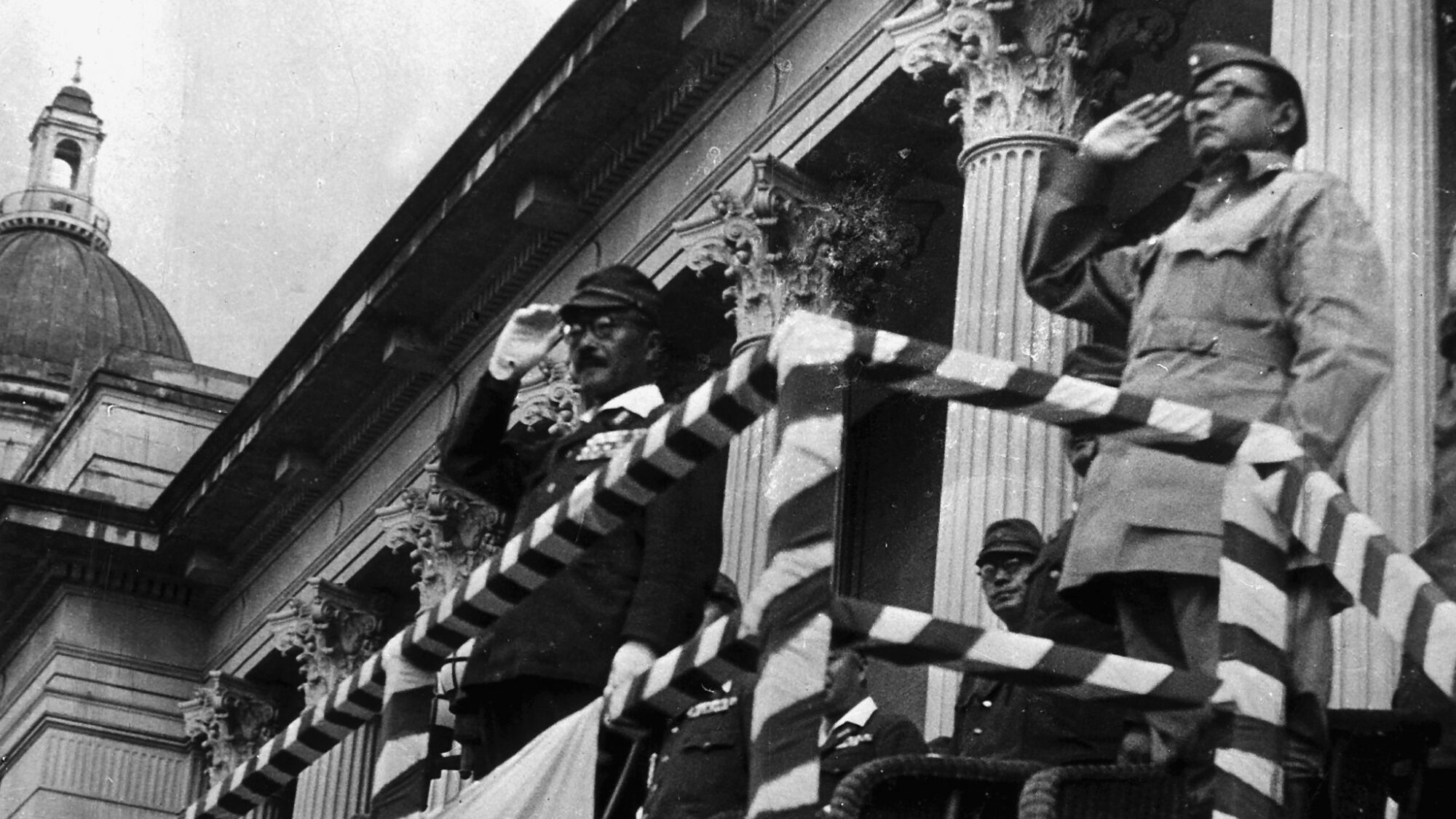
Saquib Salim
“Justice Pal is highly respected even today by many Japanese for the noble spirit of courage he exhibited,” former Japanese Prime Minister Shinzo Abe told this to the Indian Parliament in 2007.
Who was Justice Pal? Justice Radhabinod Pal, according to famous political psychologist Ashis Nandy, “is now almost entirely forgotten, even in his own country. But he was not so unknown forty years ago. He was a retired judge of Calcutta High Court, an erstwhile Vice Chancellor of Calcutta University, and a member of several important judicial commissions, national as well as international.”
Radhabinod Pal’s highest claim to fame was his service as one of the eleven judges at The International Military Tribunal for the Far East. The tribunal also known as the Tokyo Trial was set up in 1946 to try the leaders of Japan for War Crimes during the Second World War. He famously pronounced a dissenting judgment. Many of the Indians admire him for keeping company with the European judges at a historic moment. Some criticise him for ‘exonerating’ Japan for war crimes.
Why and on what grounds did Radhabinod exonerate the Japanese leaders, seven of whom were awarded death sentences by other judges on the bench?
Ashis Nandy, whose father was a friend of Radhabinod, in his 1992 essay, The Other Within: The Strange Case of Radhabinod Pal’s Judgement on Culpability writes, “Pal was a nationalist of sorts, and that went in favour of the Japanese…. there was a Japanese connection with some strands of anti-imperialism in India. This connection was strongest in Pal's home state, Bengal…. Some years before the Second World War, Rash Behari Bose (1880/86-1945), a Bengali freedom- fighter, had escaped to Japan from India and founded an Indian National Army there.
 Yasukuni Shrine which has a memorial for Radhabinod Pal in Japan
Yasukuni Shrine which has a memorial for Radhabinod Pal in Japan
He had even married a Japanese and settled down permanently in the country, neither of them a mean achievement in those times. The Army was later led by Subhas Chandra Bose, an erstwhile president of the Indian National Congress who had broken ideologically with Gandhi. Bose had dramatically escaped from India in 1940 to go first to Germany and then to Japan. The INA was recruited mainly from prisoners of war from the British Indian Army and it remained in close touch with the Japanese army. In 1946, at about the time Pal was appointed to the International Tribunal, some of the officers of this rebel army were tried in India, giving rise to widespread public protests and demonstrations.”
Nandy also argued that many Indians, “when they applauded the judgment, did so because, as they saw it, a worthy son of India had repaid the Japanese warlords for their support of the Indian freedom movement, especially the Indian National Army (INA) of Subhas Chandra Bose (1895-1945), which had fought alongside the Japanese army during the Second World War.”
This must have played a part in Radhabinod’s judgment and of course, Subhas Chandra Bose, INA, and Indian nationalism were there in his subconscious but the judgment was based on a sound understanding of international laws, history, and philosophy.
Richard Minear in Victor’s Justice: The Tokyo War Crimes Trial notes, “All eleven justices shared the disability of being citizens of the victor nations. Five justices were vulnerable to more specific challenges: that they had prior involvement in the issues to come before the tribunal; that they lacked the necessary language; that they were not judges…. We have discussed factors that disqualified all or some of the justices. What of positive qualifications? How many of the men appointed to this international military tribunal had any background in international law? The answer is one: Justice Pal.”
Radhabinod understands of law and justice, as Minear understood, was not merely because of a better reading of International Law. Radhabinod’s doctoral thesis was on traditional Hindu law. He wrote volumes on the philosophy and history of Hindu law.
 Hideki Tojo and Subhas Chandra Bose
Hideki Tojo and Subhas Chandra BoseRadhabinod puts forward his understanding of law in The History of Hindu Law. He writes, “The modern practical jurist understands by the word 'law' generally only legal provisions. On the other hand, those who center their attention, not on legal provisions, but on the social order, would be sure to observe and emphasize the common element amid this variety. This social order is among civilized states and peoples similar in its main outlines”
Ashis Nandy argues that Radhabinod’s reading of ancient Hindu law is the "final source of his judicial morality and his answer to a world in which he feels the economic, social, and international arrangements have all come to be based on lovelessness. "All the world's organisations about Nature, regarding art, concerning human beings, reveal this lovelessness"
Radhabinod went against the public opinion of his times by questioning the tribunal itself. In his dissenting judgment, Radhabinod said, “As a judicial tribunal, we cannot behave in any manner which may justify the feeling that the setting up of the tribunal was only for the attainment of an objective which was essentially political thought cloaked by a juridical appearance. It has been said that a victor can dispense to the vanquished everything from mercy to vindictiveness, but the one thing the victor cannot give to the vanquished is justice. At least, if a tribunal be rooted in politics as opposed to the law, no matter what its form and pretenses, the apprehension thus expressed would be real, unless “Justice is really nothing else than the interests of the stronger."
In the dissenting judgment, it was also asked why the leaders of victorious nations should not be tried for their war crimes, especially the decision to use atom bombs on Japan.
Radhabinod wrote, “If there was anything approaching what is indicated in the above letter of the German Emperor, it is the decision coming from the allied powers to use the ATOM BOMB. Future generations will judge this dire decision. History will say whether any outburst of popular sentiment against usage of such a new weapon is irrational and only sentimental and whether it has become legitimate by such indiscriminate slaughter to win the victory by breaking the will of the whole nation to continue to fight…. It would be sufficient for my present purpose to say that if any indiscriminate destruction of civilian life and property is still illegitimate in warfare, then, in the Pacific war, this decision to use the atom bomb is the only near approach to the directives of the German Emperor during the first world war and of the Nazi leaders during the second world war. Nothing like this could be traced to the credit of the present accused.”
Radhabinod pronounced, “I would hold that each and every one of the accused must be found not guilty of each and every one of the charges in the indictment and should be acquitted of all those charges.”
Though the leaders of Japan were sentenced. Seven were hanged by neck to death and sixteen were awarded life sentences. Former Prime Minister Hideki Tojo was also hanged.
ALSO READ: Did Ashrafs axe Hashmi Ansari's efforts for amicable resolution of Ayodhya dispute?
At a time when Bhulabhai Desai and others were fighting legal battles for the Azad Hind Fauj Prisoners of War. The general public was publically protesting against the British to save them in India. An Indian judge fought a lone battle to save the allies of Subhas Chandra Bose. The INA trials at the Red Fort unmasked the face of imperial injustice while Tokyo Trials became a site of Victor’s (in)justice
